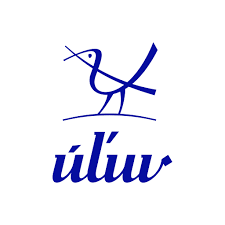Milan Beljak
In 1945, President of former Czechoslovakia Edvard Beneš approved decree No. 110 dealing with the organisation of folk art production. This regulation was later interpreted as the first act in the history of the Centre for Folk Art Production. The organisation was formed as a public institution with headquarters in Prague and a subsidiary in Bratislava. Its stated purpose was to build a strong, unified and technically competent industry from folk art production. Theodor Pistorius developed the concept of protection and development of folk art production. The activities specified in the above decree have remained the backbone of the organisation until today.
The head office served to open new folk art production cooperatives. It was, however, a very mixed group which, naturally, led to disorder. The decree was repealed, despite certain problems, as late as in 1957. A new decree ordering a compulsory membership of wide range of physical and legal persons in the organisation was adopted later. The compulsory membership included home makers, traders, arts and crafts makers or production cooperatives under which the above individuals had been organised. According to the decree, it was mandatory to apply for a membership and to pay membership fees. Moreover, the decree implied sanctions for violation of the decree. This act severely limited the effects the generous idea might have had on the industry.
The Centre for Folk Art Production established an archive of folk art production, built workshops, funded various productions, purchased tools, organised development and sales of products, published specialised magazines and other publications, organised exhibitions and learning courses etc.
After some structural changes, cooperatives became part of the Union of Cooperatives and were forced to adopt organisational, economic and production regulations that were effective for the cooperatives with industrial production. The changes resulted in major stagnation and decline of folk art production in the cooperatives.
The Centre for Folk Art Production became part of the Culture Ministry on 01 July 1954. Effective from 05 May 1958, Act of the Slovak National Council No. 4/1958 Coll. repealed Decree No. 110/1945 Coll. and established the Centre for Folk Art Production (ÚĽUV) in Bratislava, an independent legal person active in the protection and development of all spheres of folk art production. It was a highly effective system. The ÚĽUV brought together people who had not joined a cooperative or had cancelled their membership due to various reasons. The act does not require compulsory membership nor does it contain any other regulations. Since then, further action was nourished only by personal communication, honour for other’s work and respect for traditions. The closed system of logically-linked activities stood many tests, proved its existence and viability and survived all delimitations and pressures. Market position is boosted by the strong brand jointly used by all makers, commonly accepted production conditions, top standard guarantee and code of conduct. It is the system beneficial for all parties.
I believe that the benefits the úľuv brand has may result in the formation of an association for folk art producers or an art fund organisation. The ÚĽUV needs a partner with whom the organisation would agree to make contracts on the joint use of the Regional centres of crafts, our galleries and shops administered by non-profit organisation, our magazine and of other benefits, all in favour of all supporters of folk art production. I think it is the highest time for the ÚĽUV to join forces with a strong partner uniting folk art makers in Slovakia.
